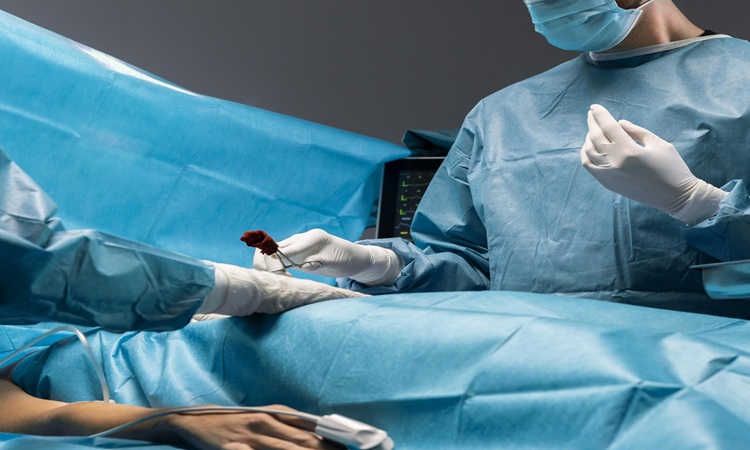Gallbladder Removal Surgery: What to Expect & How to Recover
2025-07-09 / RG STONE HOSPITAL / Gall Bladder Stone

Gallstones are small, hardened deposits that form inside the gallbladder and can cause severe abdominal pain, digestive problems, nausea, and even complications like gallbladder infection or inflammation (cholecystitis). When gallstones cause recurring or severe symptoms, doctors often recommend gallbladder removal surgery, also known as a cholecystectomy.
This blog will guide you through everything you need to know about the procedure, what to expect before and after surgery, and how to recover effectively.
What Is the Gallbladder and Why Is It Removed?
The gallbladder is a small, pear-shaped organ located beneath the liver. It stores bile, a digestive fluid that helps break down fats. However, the gallbladder is not an essential organ — the body can function normally without it.
When gallstones block bile flow or cause inflammation, they can lead to:
-
Severe abdominal pain (especially after eating fatty foods)
-
Nausea or vomiting
-
Fever and chills
-
Digestive disturbances
In such cases, gallbladder removal becomes the most effective solution to prevent future attacks or complications.
Types of Gallbladder Removal Surgery
There are two main types of cholecystectomy:
1. Laparoscopic Cholecystectomy (Minimally Invasive)
This is the most common method. Small incisions are made in the abdomen, and a laparoscope (a thin tube with a camera) is inserted to guide the surgeon. The gallbladder is then removed using small surgical tools.
Advantages:
-
Less pain
-
Shorter hospital stay
-
Quicker recovery (usually 1-2 weeks)
-
Minimal scarring
2. Open Cholecystectomy
In this traditional method, a larger incision is made to remove the gallbladder. It’s usually done if complications are expected or if laparoscopic surgery isn’t possible.
Used when:
-
There’s infection or severe inflammation
-
There’s scar tissue from previous surgeries
-
The patient is obese or has unusual anatomy
Recovery time: About 4 to 6 weeks
Preparing for the Surgery
Before undergoing surgery, your doctor will likely recommend a few steps to prepare:
-
Medical evaluation: Blood tests, imaging (ultrasound or CT scan), and a physical exam to assess your health.
-
Medication review: Some medications (like blood thinners) may need to be paused.
-
Fasting: You will be asked not to eat or drink for several hours before the surgery.
-
Consent and counseling: Your surgeon will explain the procedure, risks, and what to expect.
What Happens During the Procedure?
Laparoscopic Cholecystectomy (Typical Process):
-
Anesthesia is administered to keep you asleep and pain-free.
-
The surgeon makes 3-4 small incisions in your abdomen.
-
A laparoscope is inserted, and your abdominal area is inflated with gas for better visibility.
-
The gallbladder is carefully detached from the liver and bile ducts.
-
It is removed through one of the incisions.
-
The incisions are closed with sutures or surgical glue.
The procedure usually takes about 45 minutes to 1 hour.
What to Expect After Surgery
Immediately After:
-
You’ll be taken to a recovery area for observation.
-
Most patients go home the same day (especially after laparoscopic surgery).
-
You may feel mild shoulder pain due to the gas used during the procedure — this is temporary.
Common Post-Surgery Symptoms:
-
Mild abdominal discomfort or soreness
-
Bloating or gas
-
Temporary diarrhea or loose stools
-
Fatigue for a few days
Recovery Tips: How to Heal Faster
1. Follow Post-Operative Instructions
Your surgeon will provide specific advice on wound care, activity levels, and signs of complications. Adhere to these guidelines strictly.
2. Manage Pain Wisely
Mild pain is expected. Over-the-counter pain relievers or prescribed medication can help you stay comfortable.
3. Watch Your Diet
Initially, opt for:
-
Small, frequent meals
-
Low-fat foods
-
Plenty of fluids
Slowly reintroduce regular foods as advised. Avoid greasy or spicy dishes for at least a few weeks.
4. Stay Active (But Don’t Overdo It)
-
Gentle walking helps prevent blood clots and promotes digestion.
-
Avoid heavy lifting, strenuous exercise, or driving for 1–2 weeks (or as advised).
5. Monitor for Complications
Contact your doctor if you experience:
-
High fever
-
Persistent vomiting
-
Worsening pain
-
Yellowing of the skin or eyes
-
Redness or discharge from incision sites
Long-Term Life Without a Gallbladder
Most people live completely normal lives after gallbladder removal. Over time, the liver adjusts by continuously releasing bile into the digestive system.
Some people may experience occasional digestive issues, especially with high-fat meals. In rare cases, post-cholecystectomy syndrome (PCS) may occur, causing symptoms like abdominal pain, bloating, or diarrhea, which may require dietary adjustments or medication.
When to See a Doctor
While gallbladder surgery is considered routine and safe, you should consult a doctor if:
-
You’re experiencing recurrent gallstone attacks
-
There's persistent upper abdominal pain
-
You have digestive problems that don’t improve
-
Imaging reveals gallbladder inflammation or infection
Why Choose RG Hospitals for Gallbladder Surgery?
At RG Hospitals, we understand that even routine surgeries deserve exceptional care. Our advanced surgical suites, experienced gastrointestinal surgeons, and patient-first approach ensure that your gallbladder surgery is not only successful — but also smooth, safe, and minimally disruptive to your life.
With a proven track record in laparoscopic and open cholecystectomy procedures, we provide:
-
24/7 emergency surgical care
-
State-of-the-art diagnostic facilities
-
Personalized post-operative recovery plans
-
Compassionate care from consultation to full recovery
Whether you’re seeking treatment for gallstones or looking for expert consultation, RG Hospitals is your trusted partner in health and healing.
Your health is your greatest asset — don’t let gallstones slow you down. Let RG Hospitals guide your path to recovery.
Categories
Hernia Repair
Appendicitis
Piles
Urological Treatment
Hernia treatment
Enlarged Prostate (BPH)
Gall Bladder Stone
Urinary / Kidney Stone
Vitamins
Indian Health Care System
Exercise
Obesity
Female Urinary Incontinence
Single Incision Laparoscopic Surgery (SILS)
Kidney Cancer
Bladder Cancer
Ovarian cancer
Nephrology
Bariatric Surgery
Kidney Function Test
Female Urology
Radiation Therapy
Alcoholic Fatty Liver
Liver disease
Gastroenterology
Kidney Disease

